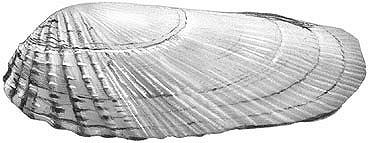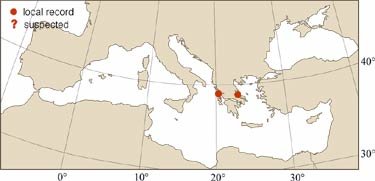
|
Relevant Synonyms
Misidentification
|
|
| drawing: Tuvia Kurz |
|
SHORT
DESCRIPTION
color :
chalky white to dirty cream yellow.
common size :
25-80 mm in length. |
DISTINGUISHING CHARACTERISTICS
BIOLOGY / ECOLOGY
habitat :
sand substrata from the lower intertidal zone down to 8 m. |
|
1st
Mediterranean record
|

|
|
DISTRIBUTION
|
ESTABLISHMENT SUCCESS
speculated reasons for success :
|
|
|
MODE OF
INTRODUCTION |
IMPORTANCE TO
HUMANS |
|
KEY
REFERENCES
|
|
|